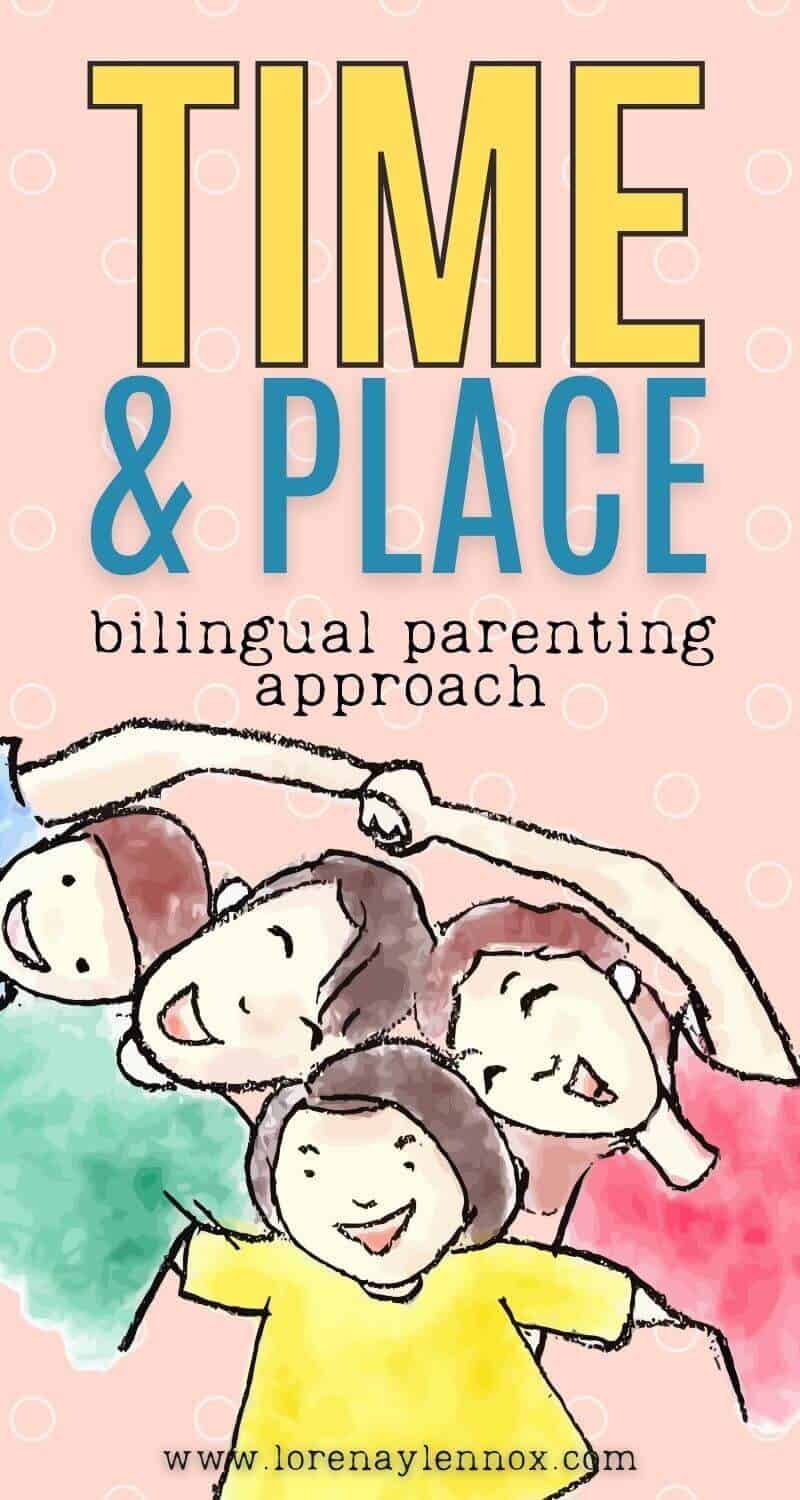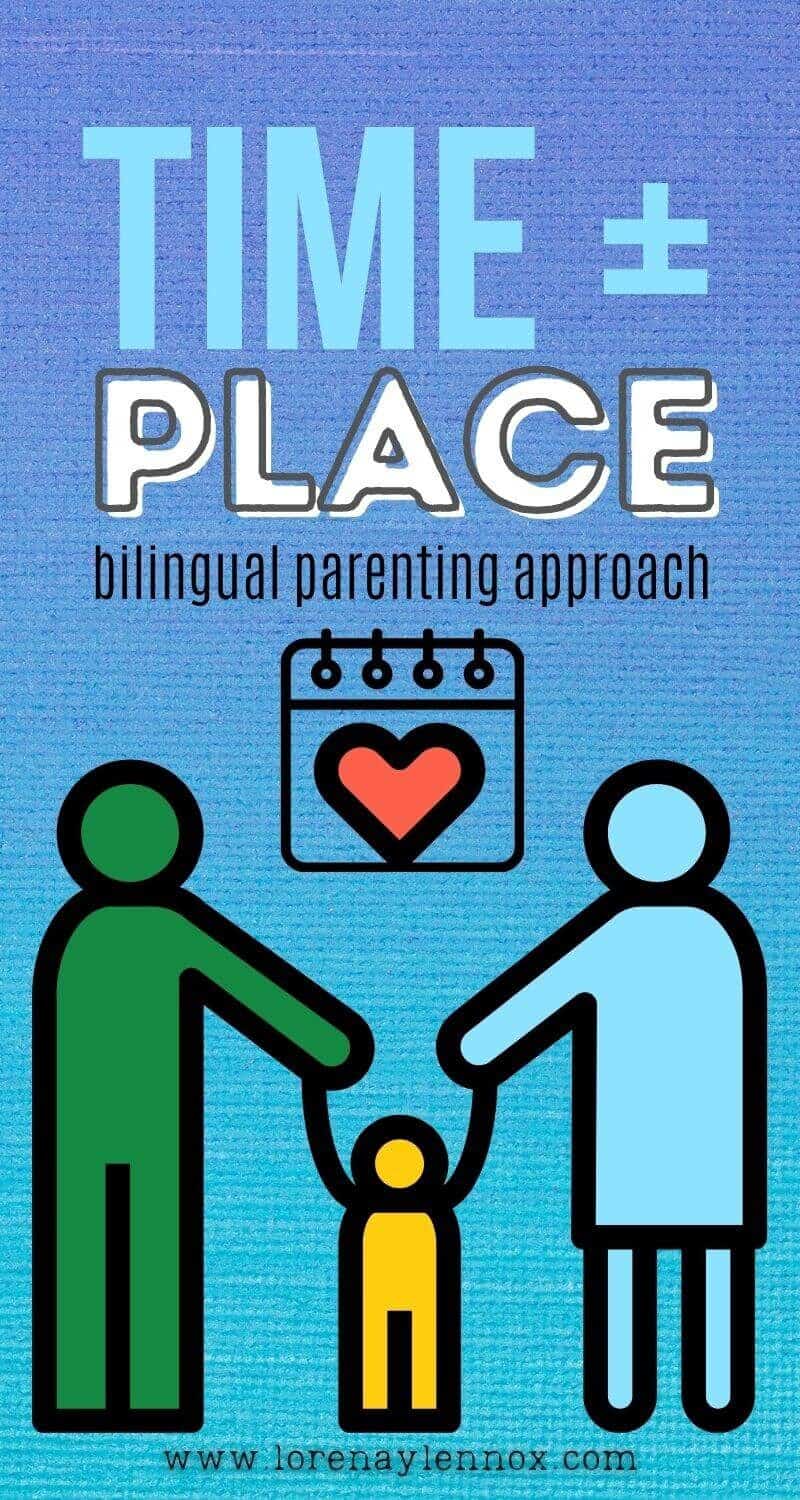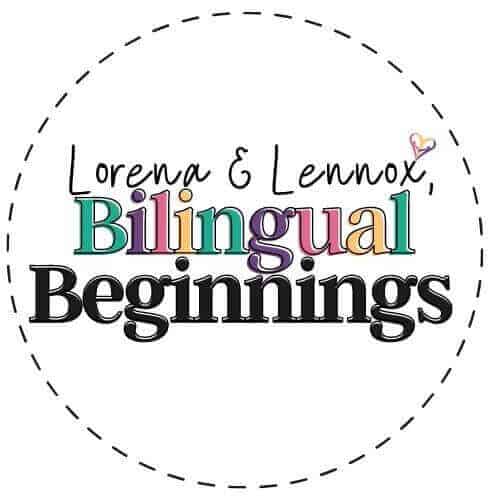Inside: What is the Time and Place bilingual parenting approach, who uses the Time and Place approach, the pros and cons of Time and Place and tips for implementing Time and Place approach in your family.
So, you are raising a bilingual child?
Amazing! You are doing something for your child that will have endless benefits for them in their future. Way to go, mom, dad, or caretaker!
Raising a bilingual child requires CONSTANT exposure in the target language, as well as CONSISTENCY and DEDICATION.
First and foremost, you need a plan. How will you raise your bilingual child?
If you are a native or fluent speaker of the target, or minority language, that is great! You have a head start in your bilingual parenting journey.
Two of the most effective approaches for native and fluent speakers are the Minority Language at Home approach (MLAH) and the One Person, One Language (OPOL) approach.
If you are not a native or fluent speaker in the target language. DO NOT FRET.
There are alternative options, and if you find the proper support for additional input in the target language, you have a way to raise your child bilingually!
One approach that could work for your family is called the Time and Place (T & P ) approach.
Keep reading to learn more about this bilingual parenting approach and tips on tailoring it to your family!

What is the Time and Place Bilingual Parenting Approach?
The Time and Place bilingual parenting approach is pretty straightforward.
You choose between either a time or place to speak to your kids in the minority language.
Below are a few examples of how a family might use time as the parameter for this approach:
- In the morning, the family speaks in the majority language. At night, the family speaks in the minority language.
- During the weekdays, the family speaks in the majority language. Over the weekends, the family speaks in the minority language.
- On Monday, Wednesdays, and Fridays, and the weekends, the family speaks in the majority language. On Tuesdays, and Thursdays, the minority language.
Do you get the gist?
Bottom line, it’s your time and your family, so you have the advantage of creating your own time schedule that works best.
Below are a few examples of how a family might use place as the parameter for this approach:
- In the house’s main rooms (living room, kitchen, etc.), the family uses the majority language, and in the bedrooms, the minority language.
- At the grandparents’ house (who care for the children during the week), the children use the minority language and the majority language at home.
- T & P is the approach used if there is no minority language spoken by the caretakers whatsoever, but the children go to a bilingual immersion school. Thus, at school, the children would use the minority language and the majority language.

Who Uses the Time and Place Bilingual Parenting Approach?
“T & P is a grab-bag of “non-person” strategies that sounds like the “place” strategy of MLAH except that it is less a description of the family’s daily routine and more a description of fairly regular departures from it.”
– Barbara Zurer Pearson, Ph.D
Raising a Bilingual Child
The time and place bilingual parenting approach is great for:
- For monolingual parents who want to introduce their children to a second language.
They can use the time and place approach by enrolling their children in immersion programs, hiring a caretaker who speaks the minority language, or learning the language together as a family.
- For parents who speak more than one language and want to separate the languages, contrary to the OPOL approach, where language is separated by person. For example, mom and dad both speak English, but dad speaks Spanish also. In the evenings on Monday through Friday, when dad is home, the kids speak in Spanish with Dad, but on the weekends, as a family, they all speak in English.
- For tri(+)lingual families. Mom and dad speak English, mom speaks Italian, and dad speaks German. On the weekday mornings, the kids speak Italian with the mom. In the evening, the family speaks English. And on Sundays, the kids speak in German with the father. Wow, it’s getting complicated now, huh?
- For parents who are not fluent enough in the minority language, but do not feel comfortable carrying out essential conversations in the minority language. yet still want to raise bilingual kids. The parents could carve out a specific time when they only speak in the minority language to their kids through activities and play.
- For parents with older children who have decided later on that they want to reintroduce them to their native tongue.
Advantages of the time and place approach
- The T & P bilingual parenting approach is an alternative for families who want to raise bilingual children but cannot do a more popular approach, such as the MLAH or OPOL approaches.
- Families can accommodate their language schedules to what fits best for their home and work life.
- If done correctly and consistently, children become the advocates of the language schedule.
Disadvantages of the Time and place approach
- There are not as many studies of the T & P approach as the MLAH, and OPOL approaches.
- It requires a high level of commitment and consistency.
- It can result in an unbalanced language exposure, with limited exposure in the minority language.
Tips and recommendations for using the time and place bilingual parenting approach
I do not have any personal experience with the T & P approach, as we raise our son Lennox using the MLAH approach. Though I have come across other bilingual parent’s IG accounts using T & P , and I am completely fascinated by their dedication to this approach. Way to go!
If you are reading this and using the T & P approach, please feel free to share some of your best tips and advice in the comments section below!
In my research, I came across Maria from Trilingualmama.com who uses this approach to raise her children trilingually in English, French, and Spanish. The father only speaks to the children in French. The mother speaks to the children in English for two weeks and Spanish for two weeks.
Here is a brief excerpt from her post about why she chose this time frame:
“I started speaking English or Spanish with the children every other day. But I quickly realized the mental gymnastics this represented for all of us and somewhere I had heard that one family would spend an entire month in a language. This seemed like too long to me, but I liked the idea and thought that maybe somewhere between one day and one month might be a good compromise. We settled on two weeks. We tried it, we loved it and we’ve never looked back.”
I recommend checking out her post to get all of her excellent tips and advice, but to close out this post, I want to highlight a few of her best tips that can guide you in your bilingual parenting journey, should you choose this approach.
Maria’s tips for using the T & P approach
- Play around with different periods of time to find a rhythm that works for the who family.
- Commit to the language wherever you go.
- If you are on your calendar day to speak in the minority language, make sure to use it everywhere on those days. That way, you are maximizing language exposure and showing commitment to your language schedule.
- Use a calendar to remember your language schedule.
- Choose a setup day for switching, and allow a couple of days for the transition to set in.
- Inform your family about the upcoming switch of languages to keep them prepared and in the loop.
For more detailed advice on how Maria makes the T & P approach work for her family, check out her post here.
Well, amigos, that closes out the Time and Place bilingual parenting approach. I hope you are as intrigued by this approach as I.
If you are using this approach or have used this approach, I would love to hear your story! Drop all the details in the comments below!
Keep reading:
- 5 Tips On Using the Time and Place Bilingual Parenting Approach
- 13 Facts Parents Who Want to Raise a Bilingual Child Need to Know
- 10 Misconceptions About Raising Bilingual Children

References:
Babin, Maria. “Raising Multilingual Children Using an Adaptation of OPOL.” Trilingualmama.com, 17 Mar. 2014, www.trilingualmama.com/raising-multilingual-children-using-an-adaptation-of-opol-switching-languages-every-two-weeks/.
Díaz, Kaila, Time and Place. The Bilingual Parenting Podcast, 22 June 2020.
Pearson, Barbara Zurer. Raising a Bilingual Child: a Step-by-Step Guide for Parents. Living Language, 2008.
Rosenback, Rita. “Time and Place – T&P as a Family Language Strategy.” Multilingual Parenting, 26 Mar. 2017, multilingualparenting.com/2015/04/29/time-and-place-as-a-family-language-strategy/.

Maria Babin
Thursday 4th of August 2022
Thank you for sharing my blog and information!
Lorena
Friday 5th of August 2022
Of course, Maria. Thank you for sharing all of your useful information!